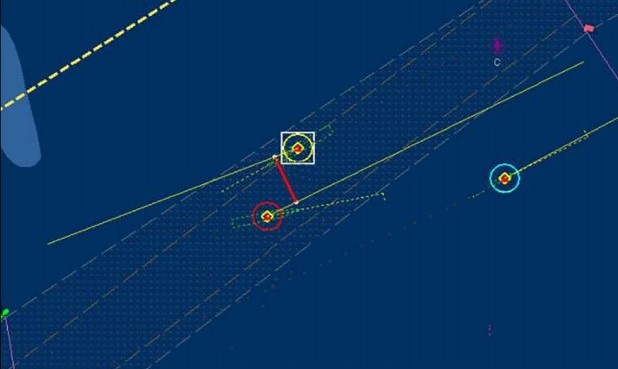UK MAIB in its most recent Safety Digest informs about an unnecessary risk of collision of an inbound bulk carrier with a ro-ro passenger ferry.
The incident
The wind was light and the visibility good when a ro-ro passenger ferry departed its berth on a scheduled night crossing.
On the bridge were the master, who held a pilot exemption certifcate, an OOW and a helmsman. During departure the local VTS informed them of the trafc situation, which consisted of a bulk carrier that was inbound with a pilot on board, and a coaster, outbound ahead of the ferry, which was about to drop its pilot at the seaward end of the buoyed channel.
The ferry’s bridge team acknowledged receipt of the trafc information from VTS but did not attempt to acquire the inbound bulk carrier on either radar or AIS.
After a few minutes the outbound coaster changed its passage plan with VTS to leave the buoyed channel earlier and disembark its pilot to the south. The ferry’s master saw this as an opportunity to overtake the coaster, so moved to the north side of the buoyed channel in order to avoid creating wash for the pilot disembarkation to the south.
Soon after the pilot on the inbound bulk carrier raised his concerns with VTS that the ferry’s position appeared to be to the north of the channel and was likely to cause a risk of collision.
Having appreciated the proximity of the bulk carrier, the ferry’s master confrmed to both VTS and the bulker carrier his intention to alter course back to starboard. After the course alteration, the ferry and the bulk carrier passed at approximately 1 cable.
Lessons learned
- The ferry’s bridge team had not appreciated the proximity of the inbound bulk carrier due to their focus on the outbound coaster and insufcient use of either radar or AIS to monitor the trafc. By not following the principles of the COLREGS and using all available means to monitor the traffic situation, the ferry’s bridge team had an inadequate awareness of the ships in their vicinity. As a result, they created an unnecessary risk of collision with the inbound bulk carrier.
- The ferry’s bridge team’s reliance on visually tracking the incoming bulk carrier was further impeded by the presence of background shore lights, making the bulk carrier’s navigation lights hard to see. This is a common problem when navigating near shore at night, and further demonstrates the need to make the best use of bridge equipment such as AIS, radar and electronic chart systems.
- Applying good bridge resource management techniques can help defend against bridge team mistakes, such as the loss of positional awareness, miscommunication, distraction and overload. Fostering an environment in which all the bridge team are empowered to raise their concerns will help in preventing close quarter situations arising.
- Bridge teams on scheduled ferry services are exposed to repetitive navigation within coastal and pilotage waters, and as such the associated hazards can become normalised. All eforts should be made by ship operators and their bridge teams to understand and mitigate against the lack of attention to the potential risks that this can lead to.






























































